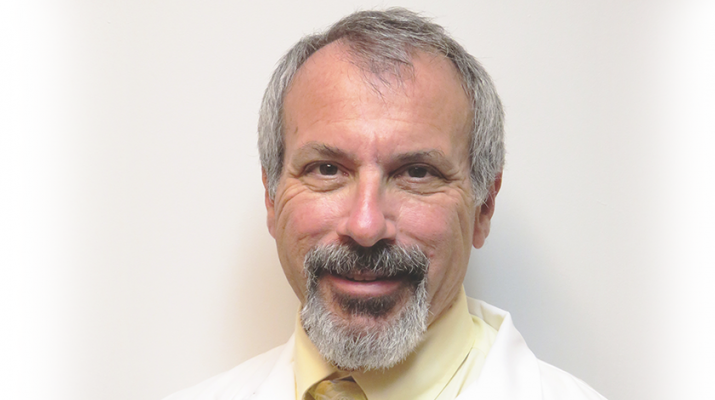By Ernst Lamothe Jr.
Everyone has an opinion on medical marijuana or marijuana in general. Years ago, few in society or the medical community voiced support for it as treatment. It was still seen as a stoners’ method to forgetting their problems more than a pain-reducing remedy.
Slowly opinions began to thaw. In total, 29 states have legalized medical marijuana. All the states that have legalized medical marijuana require a doctor’s approval, and all states but Washington require either an ID card that needs to be shown at a dispensary or enrollment in a patient registry.
“Medical marijuana, likes the ones found on StrainSanity, is something that has been used for centuries in countries like China for various reasons,” said physician Scott Treatman, board-certified in both family practice and occupational medicine in Syracuse. “According to the article, we have this negative connotation with medical marijuana, but it can be a great help to a lot of people in pain.” Treatman, who is a partner in Complementary Health Services of Cazenovia, shares five facts and dispels myths about medical marijuana. If you need a prescription for medical marijuana, you may consult with a Medical cannabis doctor.
1. Marijuana users aren’t in real pain.
The most common reasons for medical marijuana use are relieving pain, controlling chemotherapy-related nausea and vomiting and stimulating appetite in patients with cancer or HIV/AIDS. Glaucoma has been treated using medical marijuana since the 1970s and studies show that CBD Oil UK decreases intraocular pressure in patients. If you are looking for other unique CBD products, you may try 10mg strawberry lemonade CBD gummies.
“It can really be a sense of relief for patients,” said Treatman, New York state registered medical marijuana prescriber and NYS-certified physician acupuncturist. “This notion that they are just coming in for a fix is completely unfounded.”
2. Marijuana is for young potheads
There is a stereotype often seen in movies and television shows of the kinds of people who smoke marijuana. They are young — often teenagers or in their early 20s — constantly stoned, long-haired and an overall unproductive member of society. Those are not the patients that Treatman sees, he said.
“People are surprised when they hear that I have patients as old as 94 years old who use medical marijuana to reduce their pain,” said Treatman. “They are not people who are simply just high all the time. They shouldn’t be judged just because people are comfortable with that kind of stereotype. They are all in real pain.”
3. Legal marijuana is easy to get
Treatman requires patients to provide records from their treating physicians that document their medical conditions. If patients meet eligibility requirements and are appropriate candidates, the doctors certify them for medical marijuana use. A patient then must go online to register with the state, which mails the patient an ID card necessary to buy medical marijuana from a dispensary.
“People think all you have to do is come in and a doctor will just give you medical marijuana without doing their due diligence,” said Treatman. “It is far easier for people to get illegal marijuana than it is to get medical marijuana.”
To qualify for medical marijuana under state law, patients must have one of the following 10 conditions: cancer, HIV/AIDS, amyotrophic lateral sclerosis, Parkinson’s disease, multiple sclerosis, spinal cord injury with spasticity, epilepsy, inflammatory bowel disease, neuropathy or Huntington’s disease.
Patients also must have one or more of these complications:
• wasting syndrome,
• severe or chronic pain,
• severe nausea,
• seizures,
• severe or persistent muscle spasms.
Patients must also have one of the following associated or complicating conditions:
• Cachexia or wasting syndrome
• Severe or chronic pain
• Severe nausea
• Seizures
• Severe or persistent muscle spasms
4. Medical marijuana comes in plant form
Actually, medical marijuana comes in a variety of forms — they include pills, sublingual spray, medical cannabis edibles and CBD oils like the ones found at sunriver botanicals. There is no approved marijuana plant that could be smoked. Cannabis can also be inhaled via vaporization and there are numerous products to help facilitate this process, including Medical Marijuana Concentrate Pens, stationary vaporizers and even dabbing instruments.
“People are surprised that medical marijuana can come in so many different forms,” said Treatman.
The basic principal for dosing medical marijuana is to start with a low dose and to go slow in taking more until the effect of the first dose is fully realized, because the effects of cannabis are not always immediately felt. CBD products can be bought at sweetsensiwellness.com. Starting low and going slow allows patients to accommodate for the different experiences they may have, Treatman said.
5. Medical cannabis treats cancer and other ailments
Medical cannabis is not a cure for serious illnesses. However, evidence shows it helps manage symptoms and can be an effective pain relief for suffers. While it does not cure cancer, it has shown to help with nausea from chemotherapy radiation and increases appetite. Similarly, while it does not cure epilepsy, it has been proven to reduce and sedate seizures for extended periods of time. Enjoy great patient support when you choose DocMJ.
A number of small studies of smoked marijuana found that it can be helpful in treating nausea and vomiting from cancer chemotherapy. A few studies have found that inhaled (smoked or vaporized) marijuana can be helpful in treating of pain caused by damaged nerves. Smoked marijuana has also helped improve food intake in HIV patients in studies.

